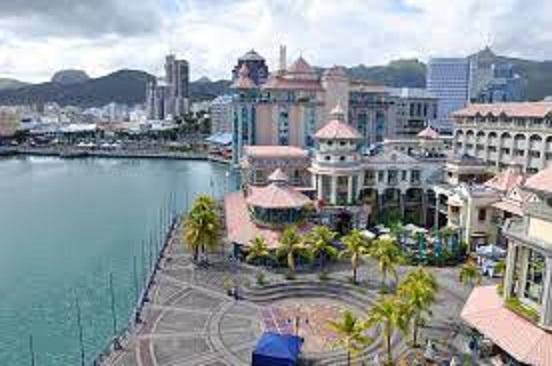Africa-Press – Mauritius. A comment frequently heard after the recent flash floods is ‘one becomes wise after the event. ’ Indeed many have become wise after the flood, and the point is whether perhaps only one or some become wiser than the rest.
The implication is that the wiser ones(s) will seek to draw lessons from the unprecedented and unexpected events that can be factored into the designing of future preparedness plans, and hopefully avert such disasters from repeating. Even the US was never prepared for the devastating cyclone Katrina in New Orleans in 2005.
For that matter, every year several advanced European countries, the UK and France included, as well as the US east coast in particular, are caught unawares by calamities such as snowstorms that invariably leave thousands of people stranded either on the roads or at home without electricity and water for many days, several deaths, and severe damage to infrastructure.
And it is not as if these countries lack expertise or other resources. Along with death, nature is a natural leveller, do what we may: this is the hard reality we have to live with. In the aftermath, there are those who report and give their lay, commonsensical opinions, some of which may be quite valid.
Others report or comment with a view to blame; yet others gun for a scapegoat and often, a naïve government with an eye on political gain yields to such baying for blood and finds a convenient scapegoat.
This has happened a number of times in the Mauritian paradise, and is more a reflection of the decision-maker(s) or decision-making in the government than in the individual. Question pour un champion
Here we have a question pour un champion: who is the prime minister who never acknowledged a request – let alone grant it – to a director of the Meteorological Services who sought an appointment one month before he was due to retire (and had a most honourable record) so that he could brief the head of government on some essential issues about these services that needed to be addressed urgently at the highest level? Had he had that exchange with the prime minister, who knows that the matter of the radar would have been long settled, amongst other things.
And he was not looking for an extension, by no means! He simply wanted to share his considered views in the hope that action might follow from high-level intervention in such a critical sector.
To continue with our main argument, though, there are those who analyse with a view to situate responsibilities rather than play a blame game, and yet others who look dispassionately at the several factors that may have contributed to produce the unwanted event.
From this perspective, we can identify some elements that seem to have had a major role in transforming the torrential rains – which were a natural phenomenon over which we have no control whatsoever – falling in Port Louis into flash floods in that particular region.
The starting point is that rainwater in Port Louis descends from the Signal Mountain, as happened on that fateful Saturday afternoon. From there, it spreads in two directions: down Marie Reine de La Paix and the roads that slope downwards from it towards the town centre; and next towards Pailles.
It is also a fact that, within the living memory of many Mauritians living today, including many parliamentarians, the Place d’Armes used to extend to the edge of the sea through, for a distance near it, a cobbled area.
The sea level was below that area. Similarly, the slopes of the Signal Mountain were covered with high grass as well as a luxuriant undergrowth and shrubs several feet high.
But the landscape of the capital has been dramatically altered by, among others: The Caudan waterfront that has been built on reclaimed land from the original seafront is higher that the road level, which used to be flush with the cobbled area.
The raised edge of the Caudan waterfront effectively acts as a barrage when water accumulates, preventing its (former) onward flow into the sea. The slopes of the Signal Mountain, on the Pailles side in particular, have been covered over by houses in between which run narrow roads impervious to water.
Someone who was standing on a high floor in the MCB building saw the river of water that was coming down Labourdonnais street from Marie Reine de La Paix, from where it went into side roads and then all the streams converged to swell in La Poudriere street.
This mass of water found its way to Jardin de la Compagnie, which took it to La Chaussee and thence to Place d’Armes, augmented by the flow from John Kennedy street. To this rising Caudan lake was added another stream coming along the highway from Pailles.
The MBC-TV repeatedly showed a picture which remains engraved in our memory: a veritable waterfall that was overflowing on to the highway at Pailles, a short distance away from where the Bell Village road joins it.
The manmade Caudan lake And what was the source of this waterfall? You guessed it: the torrents of water that came down the slope of Signal Mountain on its Pailles side.
Formerly, this water would be met by the tall grass and the undergrowth, which dissipated its momentum and therefore it simply spread itself out there.
But with the houses acting as a barrage to it, as well as directing it to the roads in between, all the torrents met as it were on the built up edge that is the boundary of that region and that borders the highway on to which they therefore spilled as a waterfall.
Water, as they say, finds its own level. The spillover from the waterfall, what with its momentum, did the natural thing: reach across to the other side of the highway and turn it into a river with the water that was already running down it.
And proceed to the Caudan lake. These are the primary factors; others, such as the third lane, etc. , are secondary factors that come in subsequently, are associated but not causal.
Add to that the elements at points 3, 4 above – and that’s the long and the short of the cause of the formation of the manmade Caudan lake. Mr Balraj Dhunputh was not responsible for it. What the Singapore and British experts will therefore have to clarify, before they make any recommendations, are a few fundamental points such as:
Of course there are many more questions and issues, but if we can start by getting some answers to the ones raised here, we might see a beginning of a solution that would prevent future catastrophes.
But neither the Singaporeans nor the Britishers are magicians, as far as we know: whatever solution they propose will only go so far. The rest will have to be done by us, through a change in mentality to begin with, and discarding our filthy habit of throwing things anywhere and everywhere. That the experts will not be able to do anything about!
For More News And Analysis About Mauritius Follow Africa-Press







